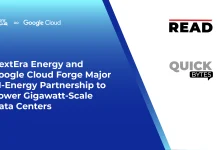VAST Data Federal, the public-sector subsidiary of VAST Data, announced a strategic partnership with Leidos aimed at revolutionizing cybersecurity operations for mission-critical environments. Leveraging NVIDIA AI Enterprise software and the VAST AI Operating System, this collaboration introduces an “agentic” cybersecurity model designed to transform the way complex threats are detected and responded to.
What the Announcement Covers
Organizations and agencies create trillions of security events every day. This huge amount of data makes it hard for human analysts to keep up. Security operations centers are flooded with logs, telemetry, alerts, and packets. This overload causes alert fatigue, missed threats, and slower response times. VAST and Leidos’ new platform tackles this challenge. It combines AI detection, real-time data processing, and autonomous response workflows.
Key capabilities include:
Unified access to hot and historical telemetry data means you can quickly search years of logs and packets. The VAST DataEngine and DataBase make vector search and fast correlation easy.
Agentic Triage and Automatic Response: AI agents cut through the noise. They prioritize alerts and create incident timelines on their own. They follow policy-driven actions, like rerouting traffic or closing ports.
Real-time inspection at the edge: This solution uses NVIDIA BlueField DPUs and the NVIDIA Morpheus architecture. It allows for fast inference and detection right at the network edge.
Cost-effective and scalable: The platform stores a lot of telemetry with no licensing limits. It also offers quick query access, which lowers operational costs at mission scale.
In the words of Randy Hayes, Vice President of Public Sector at VAST Data:
“With Leidos’ mission expertise, NVIDIA AI architecture and the VAST AI Operating System unifying data and orchestration, security teams can analyze years of telemetry instantly, surface hidden signals and let AI agents execute policy-driven responses.”
What are Implications for the Defense Technology Industry
This announcement represents a major evolution in how defense organizations approach cybersecurity, especially across intelligence, defense and mission-critical infrastructure sectors.
- From Alert Overload to Autonomous Response
Traditional cybersecurity models rely heavily on human analysts responding to alerts. The new “agentic” model shifts this paradigm-AI agents can triage, correlate and act on threats in real time. That shift potentially reduces dwell time, improves responsiveness and strengthens resilience. - Unified Data for Deep Insights
The ability to query petabyte-scale telemetry-including years of historical data-enables deeper forensic and threat-hunting capabilities. For defense organizations facing sophisticated adversaries, the differentiation lies in discovering subtle, multi-vector threats-something this platform supports.
Also Read: NVIDIA and Uber Partner to Power Global Robotaxis
- Edge-Ready Capabilities for Distributed Missions
Defense tech increasingly requires operations beyond the traditional data center: forward-deployed sites, disconnected or semi-connected environments, and hybrid cloud/edge architectures. The partnership’s focus on edge-capable DPUs and AI inference aligns with these distributed mission needs. - Turnkey Platforms for Complex Environments
Defense organizations often struggle with integrating multiple point solutions, managing complexity and ensuring scalability. A unified stack-data, compute, orchestration, policy-driven automation-simplifies operations and strengthens vendor consolidation, which matters deeply in the defense tech space.
How Does it Affect Businesses Operating in the Defense Tech Ecosystem
For companies in the defense tech supply chain, like cybersecurity vendors and systems integrators, this change offers new chances. But it also creates a sense of urgency.
Opportunities:
Cyber-AI Software Vendors: Companies that specialize in natural language processing, vector search, anomaly detection, incident-response automation, or forensic analytics may see rising demand. This is due to defense agencies embracing agentic security.
Systems Integrators & MSPs: Groups that mix data, AI, and automation into seamless solutions will likely win contracts. This is due to the growing need for all-in-one offerings.
Compute & Data Infrastructure Suppliers: The demand for high-performance computing is growing. This includes NVIDIA DGX and BlueField DPUs. Also, unified data platforms like VAST are becoming important. This trend opens new opportunities for firms focused on infrastructure.
Compliance & Governance Specialists: As AI agents make decisions, businesses need policies, audit trails, and compliance tools. This creates new service lines in these areas.
Challenges:
Integration Complexity: Unified platforms make operations easier. Still, firms need to connect older systems. They must ensure compatibility and handle changes in various environments.
Talent and Skill Gap: Organizations need to develop skills for effective cybersecurity. This includes data scientists, AI engineers, and cyber-automation experts. Investing in talent and training is crucial.
Trust & Oversight: Autonomous decisions in cyber defense raise concerns about control and accountability. Businesses need to establish governance mechanisms since AI agents act on policy triggers.
Vendor Lock-In & Platform Risk: Major vendors provide complete solutions. Companies must consider the trade-offs between flexibility, portability, and dependence on the ecosystem.
Conclusion
For defense organizations and their industry partners, a critical strategic priority is data modernization. Start with Data Modernization, Focus on telemetry ingestion, Build unified data lakes, Develop vector-search capabilities, Establish governance frameworks. This makes data readiness the key first step before using agentic AI.
Start Small, Scale Fast: Test agentic workflows in low-risk areas like log correlation and anomaly detection. This builds trust and maturity before moving to mission-critical tasks.
Define Clear Governance & Policies: As AI agents become more independent, organizations need to set decision limits, escalation rules, and audit trails. This helps maintain safe and reliable operations.
Partner Across Ecosystems: Collaborations like VAST, Leidos, and NVIDIA highlight the value of teamwork. Data platforms, AI vendors, system integrators, and defense contractors work together effectively.
Evolve with Threats: As foes use AI, defense-tech firms need to shift. They should adopt agile, data-driven, real-time security systems instead of old reactive models.
In summary, the partnership between VAST Data Federal, Leidos, and NVIDIA is a key moment for defense technology. It brings “agentic” cybersecurity to the forefront. The industry’s path is clear: unified data, AI-driven responses, and autonomous workflows will be essential. They’re not just extras anymore. Strong partnerships, early alignment, and smart investments in data-ready systems will help businesses excel in the next phase of mission-driven cyber defense.




